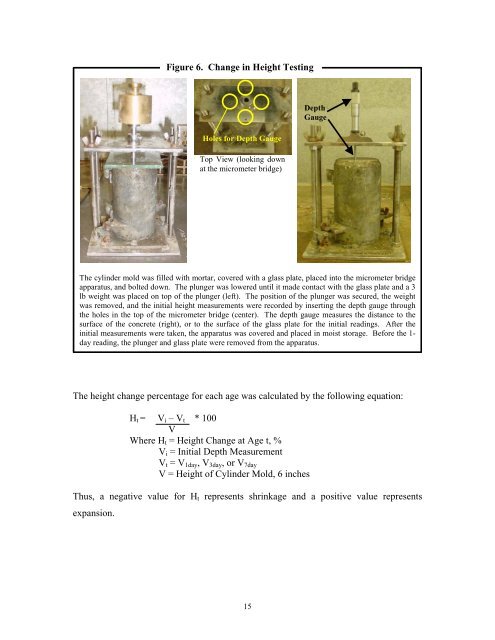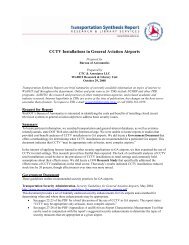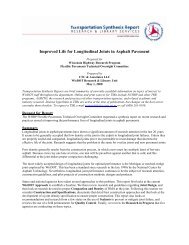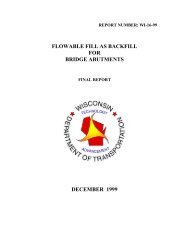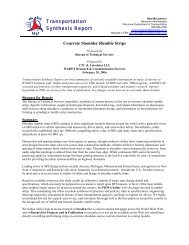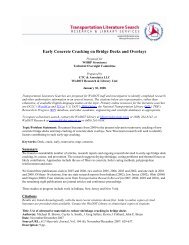DateLaboratory Testing of Portland Cement Concrete Patch Material ...
DateLaboratory Testing of Portland Cement Concrete Patch Material ...
DateLaboratory Testing of Portland Cement Concrete Patch Material ...
You also want an ePaper? Increase the reach of your titles
YUMPU automatically turns print PDFs into web optimized ePapers that Google loves.
Figure 6. Change in Height <strong>Testing</strong>Holes for Depth GaugeTop View (looking downat the micrometer bridge)DepthGaugeThe cylinder mold was filled with mortar, covered with a glass plate, placed into the micrometer bridgeapparatus, and bolted down. The plunger was lowered until it made contact with the glass plate and a 3lb weight was placed on top <strong>of</strong> the plunger (left). The position <strong>of</strong> the plunger was secured, the weightwas removed, and the initial height measurements were recorded by inserting the depth gauge throughthe holes in the top <strong>of</strong> the micrometer bridge (center). The depth gauge measures the distance to thesurface <strong>of</strong> the concrete (right), or to the surface <strong>of</strong> the glass plate for the initial readings. After theinitial measurements were taken, the apparatus was covered and placed in moist storage. Before the 1-day reading, the plunger and glass plate were removed from the apparatus.The height change percentage for each age was calculated by the following equation:H t = V i – V t * 100VWhere H t = Height Change at Age t, %V i = Initial Depth MeasurementV t = V 1day , V 3day , or V 7dayV = Height <strong>of</strong> Cylinder Mold, 6 inchesThus, a negative value for H t represents shrinkage and a positive value representsexpansion.15


